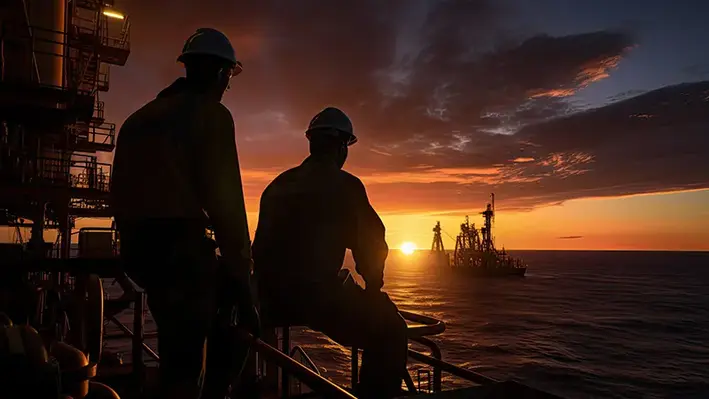 The decommissioning challenge is coming into sharp focus for Asia Pacific, as it is across much of the globe — but this brings with it immense opportunity too.
The decommissioning challenge is coming into sharp focus for Asia Pacific, as it is across much of the globe — but this brings with it immense opportunity too.
Offshore platform decommissioning can bring with it clean energy and resort development initiatives, artificial reefs and sustainable energy transition opportunities if thoroughly planned and well executed.
That’s one of the core messages from a new insight paper by top law firm Norton Rose Fulbright which assesses the decommissioning challenge facing Asia and elsewhere.
Since 1950, it estimates that over 12,000 offshore oil and gas platforms have been installed globally.
It is forecast that 2,600 may require decommissioning by 2040 at a cost of approximately US$210bn.
Newer platforms sited in deeper waters face higher decommissioning costs — but there are also opportunities, according to Norton Rose Fulbright.
“Southeast Asia, Indonesia and Malaysia have some of the most challenging offshore platform decommissioning obligations globally,” it notes.
“In addition to the significant magnitude of these obligations, uncertainty resulting from unpredictable allocation of decommissioning financial responsibility can impede international investors’ efforts to divest assets and undermine investor confidence in new projects.”
Asia reportedly hosts over 1,750 offshore oil and gas assets, with 85% sited in Indonesia and Malaysia, most operating for 20 years or longer.
Approximately 200 offshore fields are expected to cease production in southeast Asia by 2030, with projected decommissioning costs of roughly US$100bn.
Greater clarity in relation to decommissioning regimes is therefore urgently needed, the law firm notes.
“The issue is especially acute in Indonesia, where production-sharing contracts governing many concessions will soon expire. Operators or investors may view the government or national oil companies (NOC) as responsible for decommissioning costs, while government parties may assert the operator should take responsibility. Indonesia has a decommissioning legal framework, but relevant requirements are not yet fully clarified.”
Malaysia could provide something of a solution.“Malaysia has a history of artificial reef construction, independent of offshore platform decommissioning, with Malaysia’s government and NOC, Petronas, having expressed support for RTR (Rigs-to-Reefs),” the insight paper states.
“Malaysia’s Baram-8 decommissioning was the first RTR project in the South China Sea and was successful.”
Malaysia is also exploring alternative and innovative decommissioning concepts including recreational use of decommissioned platforms, the paper adds.
The RTR debate ensues globally, the law firm notes, and work remains to evaluate RTR’s future prospects, while the issues of costs and liability allocation require attention.
“Marine organisms reportedly provide 50% of our oxygen, while oceans produce 15% of our protein and absorb about 40% of global CO2 emissions. But some stakeholders believe increasing CO2 levels may cause increasing ocean acidification, accelerating loss of natural coral reefs and marine habitat.
“Thus, in addition to preserving and enhancing marine fisheries’ habitat and food resources, broader adoption of RTR decommissioning holds the potential to counteract the global loss of natural coral reefs and, thereby, to help preserve and enhance the marine ecosystem’s capacity to continue providing CO2 absorption and oxygen production capacity, critical to sustaining our world.”




